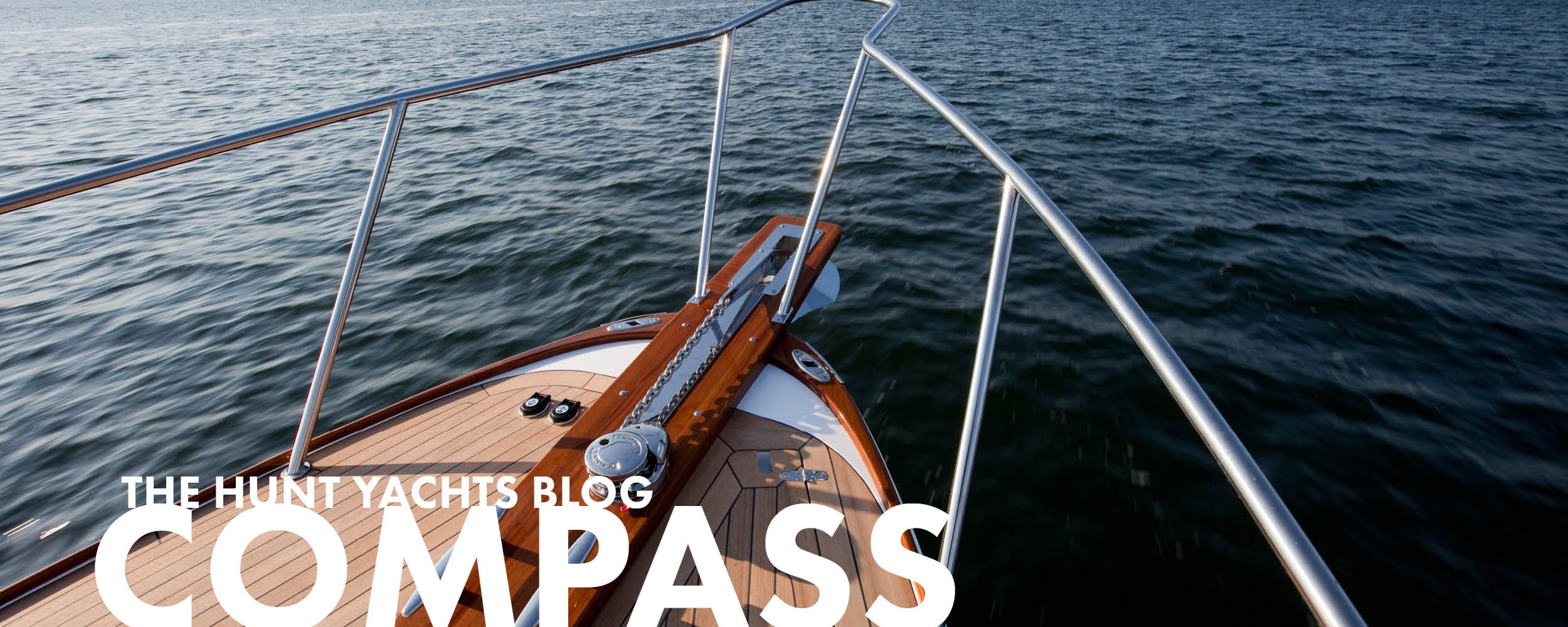At-rest or static stability, is largely dependent on vertical center of gravity and waterline beam. Early deep-vs were designed to float with their chines clear of the water for speed, so they were narrow at the waterline, skinny, for more speed. The Bertram-31 boats and others of that vintage were light and fast for their time but did roll from chine to chine when at rest in a beam sea. Today we address that problem by designing each hull to have its chine in the water at rest for about half of its waterline. This creates a wider beam on the water and and a stable boat. Today’s deep-vs do not roll any more than flatter bottoms of the same beam.
It’s also important to understand that hard chine boats are generally more stable than round bilged boats. This is because the hard edge of the chine is more resistant to rolling than a nice soft round edge. A hard chined boat equal in waterline beam to a round bilged boat will be stiffer.
Static stability is only part of the picture however. Another component in planing boats is dynamic stability. And it is an important one. The same forces that lift a planing boat above the water also stabilize the boat and counteract rolling. Displacement boats have no such benefit, thus the need for fin stabilizers and flopper stoppers. Planing boats gain stability once on plane. They actually are stiffer running at speed. The deep-v has the added advantage due to the deadrise because the planing forces are always working to right the boat. These forces are acting normal to the surface of the hull through the center of lift. On flat bottomed hulls these forces are acting normal to the bottom also, but do not counteract a roll.
It’s also important to understand that hard chine boats are generally more stable than round bilged boats. This is because the hard edge of the chine is more resistant to rolling than a nice soft round edge. A hard chined boat equal in waterline beam to a round bilged boat will be stiffer.
Static stability is only part of the picture however. Another component in planing boats is dynamic stability. And it is an important one. The same forces that lift a planing boat above the water also stabilize the boat and counteract rolling. Displacement boats have no such benefit, thus the need for fin stabilizers and flopper stoppers. Planing boats gain stability once on plane. They actually are stiffer running at speed. The deep-v has the added advantage due to the deadrise because the planing forces are always working to right the boat. These forces are acting normal to the surface of the hull through the center of lift. On flat bottomed hulls these forces are acting normal to the bottom also, but do not counteract a roll.

